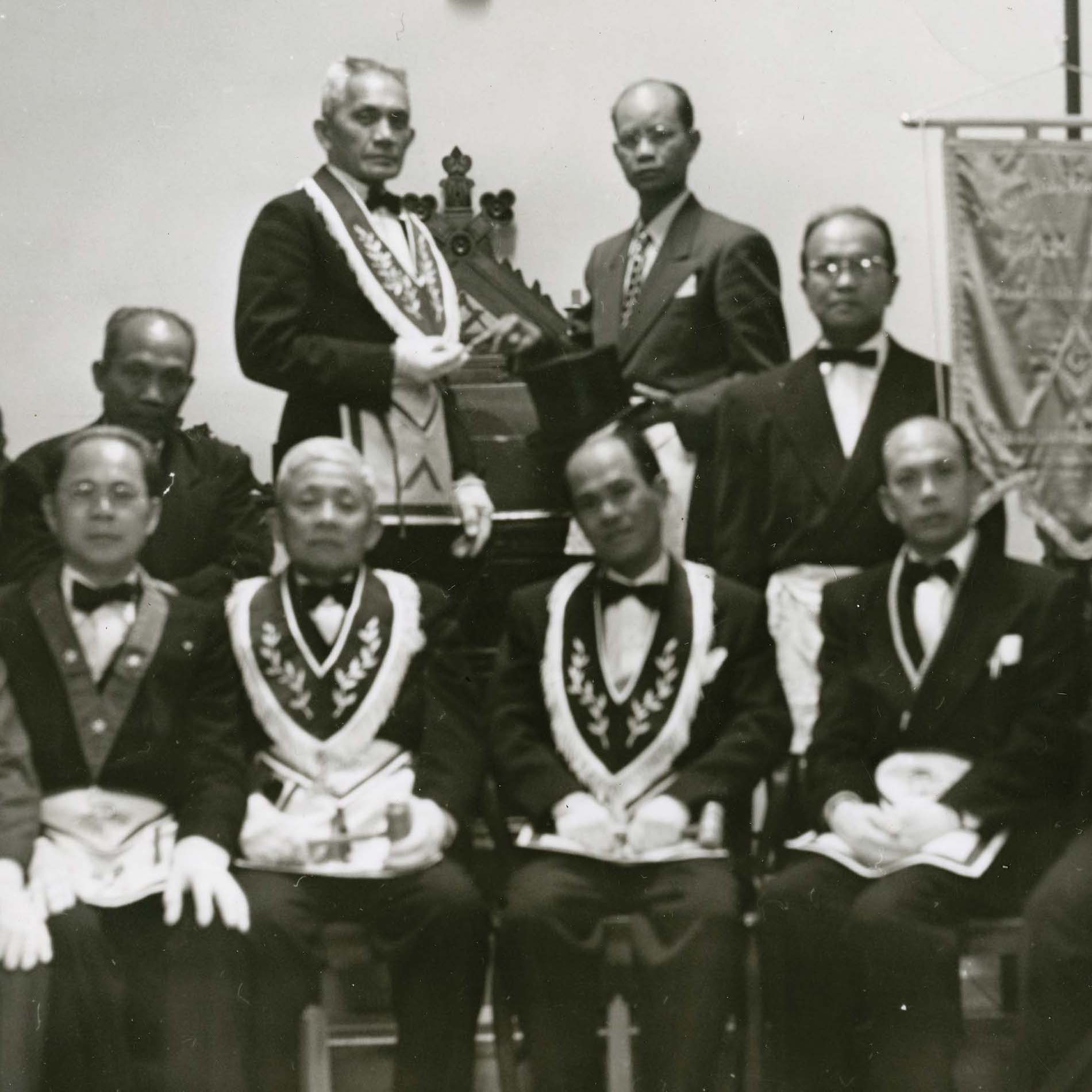
How a Filipino Prince Hall Lodge Was Nearly Forgotten
The forgotten history of Prince Hall Masonry’s brief Filipino lodge boom—and long decline—in California.
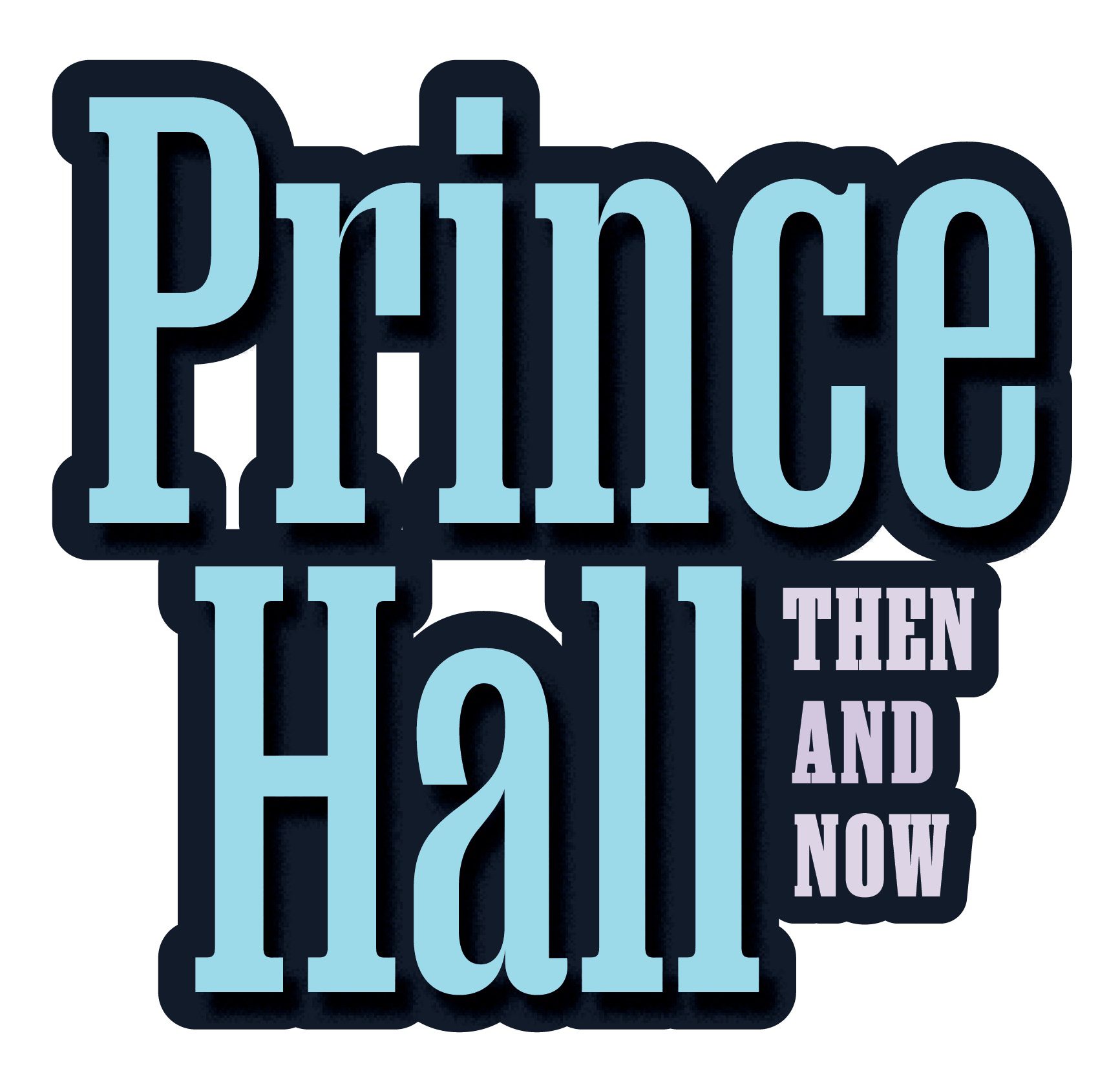
By Ian A. Stewart
Above: Grand Masters David San Juan, of the Prince Hall Grand Lodge of California, and G. Sean Metroka of the Grand Lodge of California inside the Sacramento Masonic Temple this May.
For all the pomp and ritual that defines Freemasonry, the hard work of guiding the fraternity was happening with decidedly less spectacle on a recent May afternoon. Rather, it was happening over a medium pizza at the end of a long table strewn with paper plates inside the Sacramento Masonic Temple. That’s where grand masters David San Juan, of the Most Worshipful Prince Hall Grand Lodge of California, and his counterpart, G. Sean Metroka of the Grand Lodge of California, were sitting down for what has become a monthly lunch meeting between the two leaders. It’s a fitting setting, given that the historic temple on J Street is home to lodges from both groups. On the day’s agenda was a proposed partnership between the organizations to support vocational education in Sacramento schools and some preliminary talks about establishing a grand lodge liaison program. There were also plenty of asides about Masonry and history, and more than a few laughs.
For two organizations that until just a generation ago rarely worked together, meetings like this represent major progress. Beginning in 1995, when the two groups mutually recognized each other, Prince Hall Masons and those from the Grand Lodge of California have partnered on several philanthropic initiatives and stood side by side at public events. Still, the leaders say, there’s room for more.
Here, the two grand masters—each nearing the end of his term—reflect on what has become a historic partnership, ways to deepen the relationship, and how to confront the challenges facing both organizations.
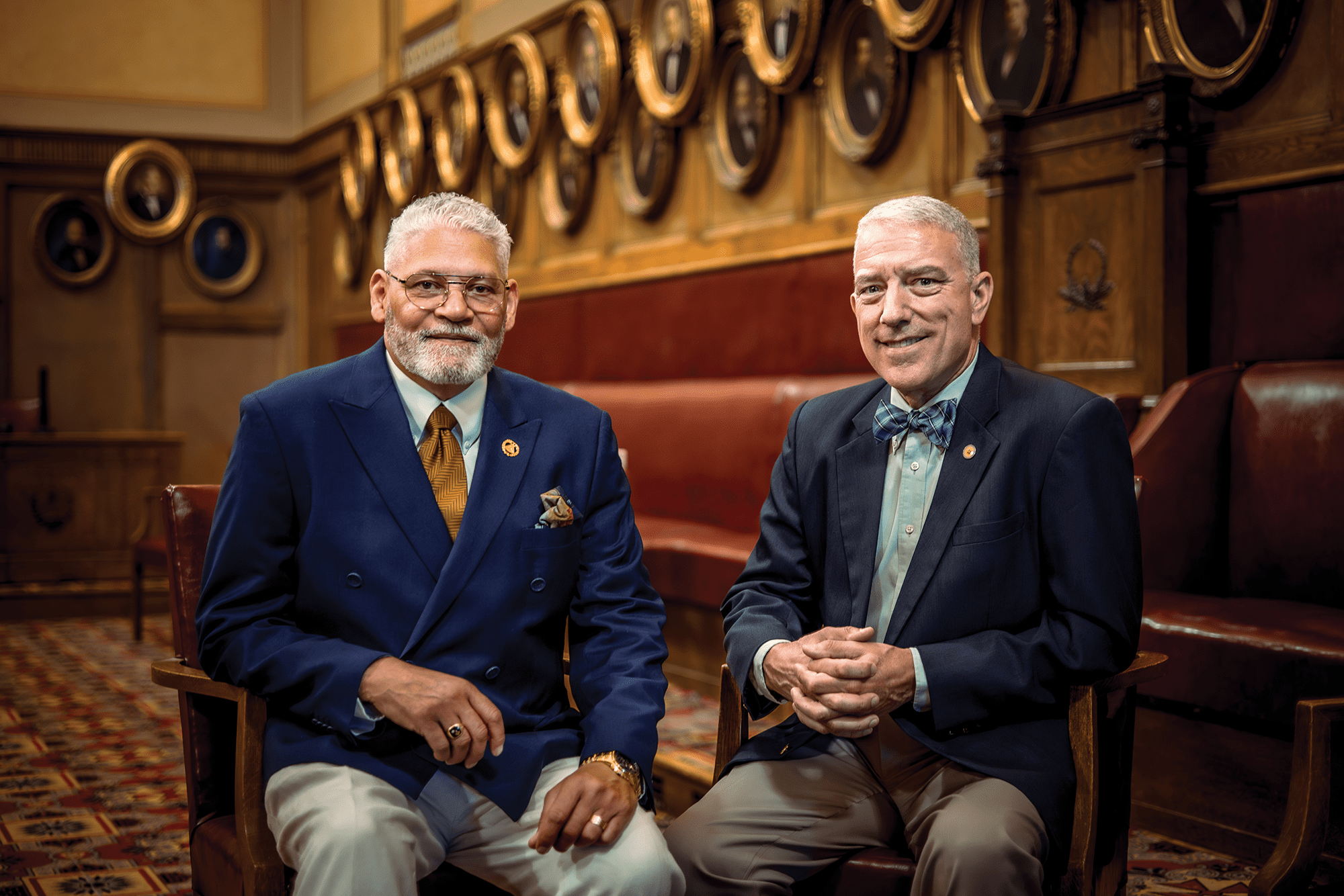
G. Sean Metroka: We have lodges around the state that do a lot together. Not only do they meet in the same buildings, but when there’s a parade or an event in the community, they often come together. I think that those opportunities, when they arise, are beautiful to take advantage of. But [David San Juan] and I are always talking about other ways we might collaborate for the benefit of Masonry and the communities in which we live. We had a conversation today about how we might come together to assist programs in the Sacramento city schools. And I’m looking forward to seeing that progress. I think we can do a lot together that we would not be able to do separately.
David San Juan: I agree with that 100 percent. And you know what, Sean, this is the thing: Over the years, we have developed a friendship. So it’s about more than just doing the work of what Masons do. It’s about the friendships we’ve developed over these years, from one grand master to the next. I’ve been fortunate to be around a whole lot of your grand masters. It’s enriching to see us come together not only at the highest level but also in our subordinate lodges to support each other’s programs. It’s something that was a long time coming. Whenever we talk about what we’re doing within our jurisdiction or what we’re trying to improve, you’ve been just a phone call away. And I only see that building in the future.DSJ: That’s a very interesting question. Why is Prince Hall Masonry important? And why do we want to continue to keep our sovereignty and our history? Think about what we’ve had to endure not just to be Masons, but to be citizens who have the right to vote. That’s a very important part of our history. And the fact that we stayed together, held together through all of slavery, the Jim Crow laws, and so forth—that was very difficult. So we’re proud of our history, and we don’t want to change that whatsoever. We want to maintain not just our sovereignty, but our history.
GSM: One of the things that strikes me when I’m asked this question is that even though we are similar in almost every respect, we do have differences that have developed over the years, and I think there is value in maintaining them. I think we would lose more than we would gain if we were to try [to join]. I don’t see a pressing reason to combine them, but I see many reasons not to. And it is my hope that both of our traditions in Freemasonry will continue side by side, enjoying each other’s fellowship, and working together when it makes sense to.
DSJ: What I know from being at the Conference of Grand Masters recently is that we are all facing the same obstacles. If you look at the numbers, the average age of an Entered Apprentice might be around 45, but the average age of a Master Mason is closer to 60. Somewhere along the line, we missed an entire generation. Plus, we’ve had the challenge of covid-19. We have an opportunity now to do what we haven’t always done well enough, and that is to teach people how to live better. You know, there was a time when Masons got together and helped each other buy a home. Or they would buy a car from another Mason. At some point, we need to get back to that.
GSM: Another challenge is that, because of the wide variety of traditions in Freemasonry that are becoming more commonly known, some of our members think the tradition they were brought up in should be what’s practiced elsewhere. But the fact is, our practice of this institution varies widely. So we have a challenge to find a way to become more welcoming to people and also to express the importance of letting our traditions develop organically.
DSJ: One of the things that we have to improve on—and that we can very easily admit—is that we don’t let the public know all the good things we do. Whenever they do see us out in public, there’s a big mystery about what we’re all about. We need to do better about that.
GSM: I think the issue of the incredible variety of traditions in Freemasonry and whether we will ever be seen as a cohesive entity is a real issue, but it’s going to take a long time to make headway on it. We are very old, and in some of our grand lodges, we’re very much stuck in our own ways. So, for example, I think most of us freely acknowledge that there have been women in Freemasonry for hundreds of years, and there’s lots of evidence to support that. Does that make it a problem to acknowledge that there are women Freemasons practicing a regular form of Freemasonry? It’s not a problem, it’s just a change. A part of the way we deal with that is to start to acknowledge one another more openly. It’s kind of like the association between our two jurisdictions: Initially, there was a lot of concern, perhaps unfounded, but it was because that level of trust had not been established. It has been established now, and the concerns, for the most part, have gone by the wayside. I think the same will happen as we reach out to other Masons.
DSJ: We have to understand who we are and that we are different. We bring something a little bit different to Freemasonry. You can hear that in our music, in our literature, even in our speech. But in the end, it’s all Freemasonry. That’s not well understood because we haven’t done what we’re doing right now, and that’s telling our own story so that it’s better understood by not just your Masons [in the Grand Lodge of California], but also by our side as well.
GSM: I am hopeful that 10 years from now, Freemasonry in the state will not be viewed as some great unknown, or some mystical organization that people always wonder about and tend to view as if it were some sort of a conspiracy. And I think that the best way to do that is to continue on the path we’re on now, where we are more open about who we are, what we do, and why we are so devoted to this ancient craft. Mostly, I am hopeful that in 10 years, people will see Freemasonry for what it has always been: an organization for the good of humanity, to help people live better lives, and to help those in need.
DSJ: I agree. For us, 10 years down the line is not that long, because our tenure [in the grand line] is three years. So our junior warden, nine years from now, will be the grand master. So we’re all on the same page. This started back in 1995 [with official recognition]. And it has blossomed from there. But with the direction and the momentum that we have right now, I believe we’ll be able to keep that going. The sky’s the limit as far as what we can do together. As I’ve been told so many times, many hands make light work.
DSJ: Well, mine is straightforward. The first thing is to prioritize what you intend to do during your tenure and see it through. Secondly—and this I have to give credit to my wife for—she said now that you’re grand master, you have a platform. You have a voice. You need to use that platform to do good and to spread goodwill. You have to actually help your community. And then third, and maybe most importantly, you have to build trust within the community you serve. Whatever you do, don’t break that trust. Because when you do, it’s almost impossible to get it back.
GSM: As I approach the end of my tenure, if I were to give advice, it would include a suggestion that you keep your eye on the bigger picture, well beyond the end of your term. Think about the general direction you want the fraternity to take, and work toward that. One year is not sufficient to move an organization of this size to any point. But you can take steps to make progress toward those objectives. I would also suggest that my successors not get mired in the day-to-day. There are lots of challenges that come uniquely to the grand master. It can be difficult not to allow them to take over your existence. Don’t get stuck on those things. Look at the good and expand on that.
DSJ: For me, my dad was my hero. He still is my hero, though he passed away many years ago. When I was a kid, he had a bar in his home that he and all his Masonic buddies would pull up to and talk about solving the world’s problems. And I’d be at the end of the bar until they kicked me out. So when I became a Mason in the lodge that my dad was raised in, Stanley Y. Beverly Lodge № 108 in Suisun City, it was very emotional talking behind the closed doors my dad was doing with his friends. I remember the feeling that I had as a 13-year-old, feeling as though I was in a village and that I was loved and secure. And here I am now. Who would have ever thought that I would become the grand master from all of that?
GSM: I’ve had many wonderfully fond memories of my time in Freemasonry, but I would have to say, the greatest joys for me are the friendships. I have been blessed with some wonderful friendships because of my association with this fraternity. That’s by far the thing I value the most.
DSJ: I want to say, Sean, you’re my friend. You’re my brother. You’ve been a wonderful Mason and you’ve made yourself available even in times when it was difficult. Being the grand master, you’re expected to be in a lot of different places at the same time. But you’ve made yourself available. You helped to make my tenure a wonderful one. So I appreciate you.
GSM: Thank you, my brother, I appreciate that. And I appreciate your willingness to go down this rabbit hole with me, because as I was preparing to take office, I gave a lot of thought to what I wanted to accomplish. And chief among my objectives was to work together with you to strengthen the relationship between our grand lodges, and you willingly went along and we’ve managed to get our large organizations working together. And I’m grateful to you for that. I am especially grateful to you for your friendship, and it means a tremendous amount to me. So thank you.
Photograph by:
Martin Klimek

The forgotten history of Prince Hall Masonry’s brief Filipino lodge boom—and long decline—in California.
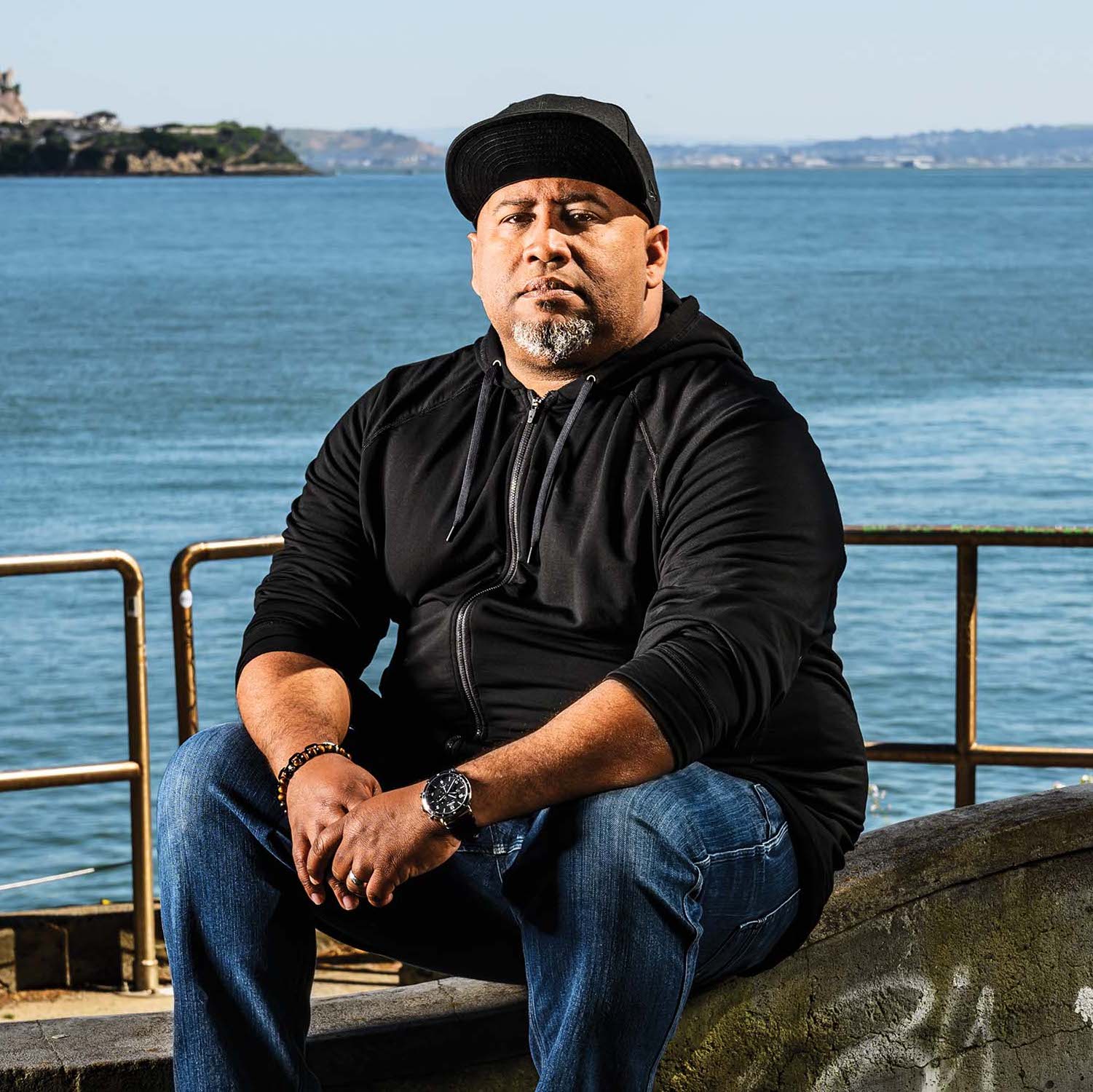
Aaron Washington on learning from the lessons of the past.
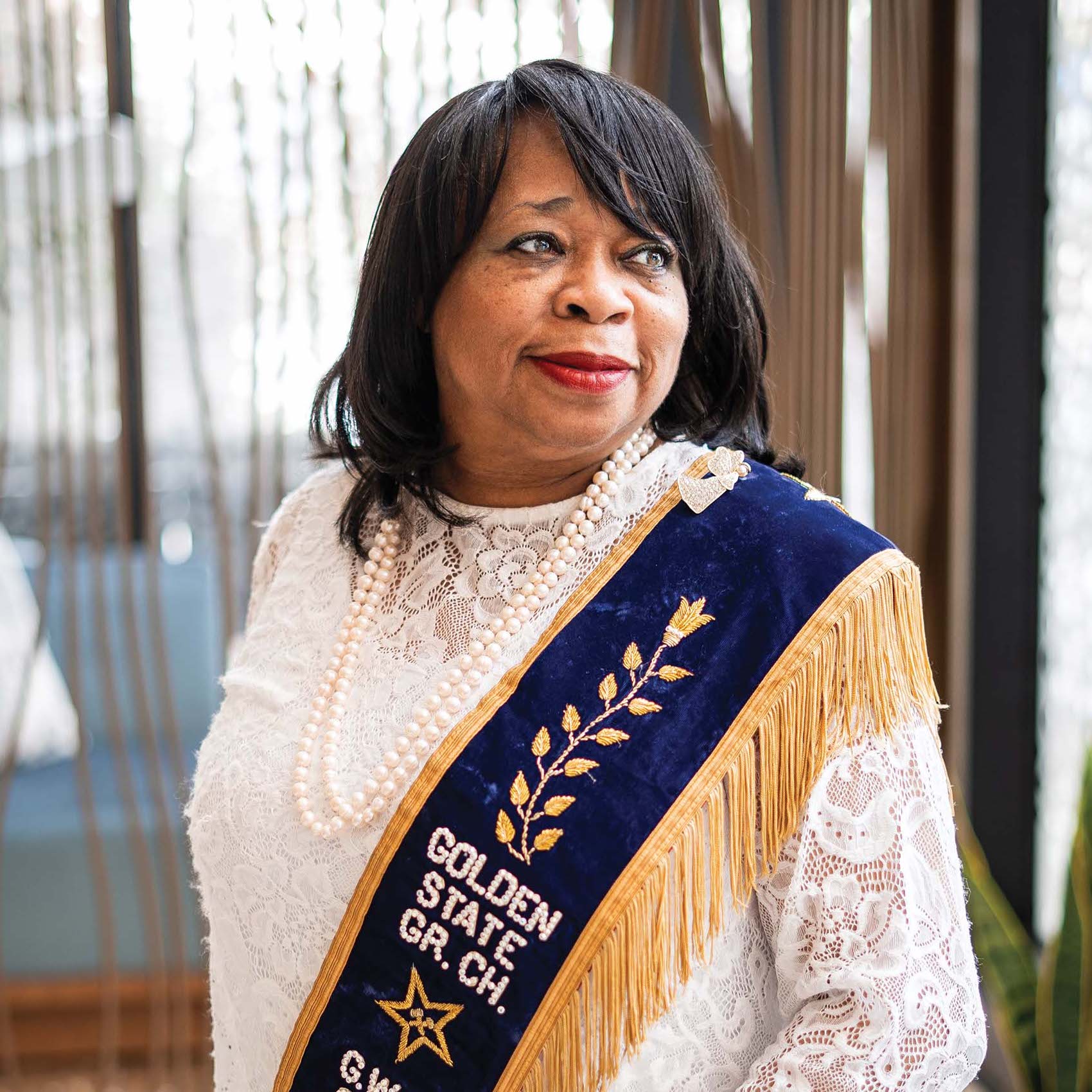
From the Eastern Star to the Prince Hall Shrine, exploring the many appendant bodies of Prince Hall Masonry in California.